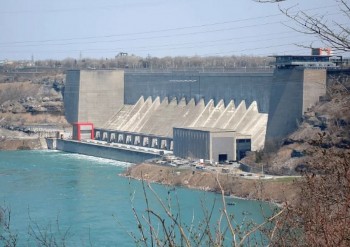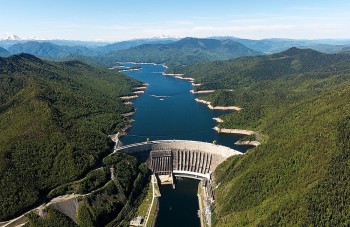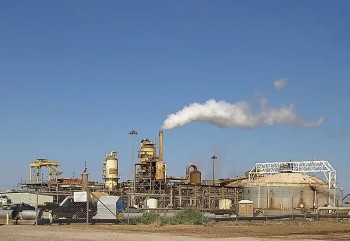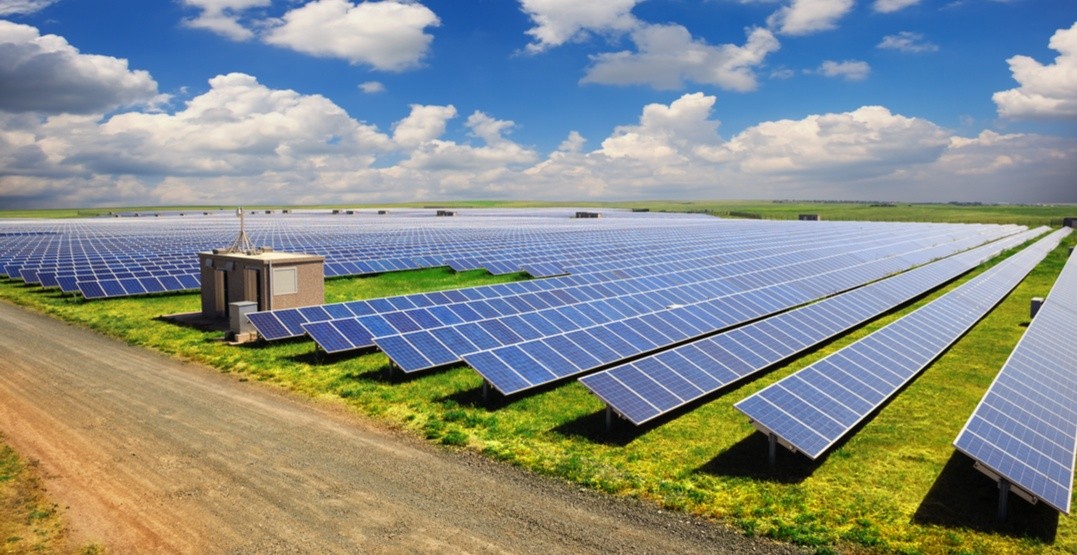Top 15+ Biggest and Most Stunning Solar Farms in the US
Overview: Solar Farms in the United States
As of 2025, the United States has significantly expanded its solar energy infrastructure, positioning itself as a global leader in renewable energy. The nation's total installed solar capacity has reached approximately 184 gigawatts (GW), marking a 26% increase from the previous year.
Key Highlights:
-
Record-Breaking Growth: In 2024, the U.S. added a record 30 GW of utility-scale solar capacity, accounting for 61% of all new electricity generation capacity that year.
-
Projected Additions: The Energy Information Administration (EIA) anticipates an addition of 32.5 GW of new utility-scale solar capacity in 2025, with Texas (11.6 GW) and California (2.9 GW) leading the expansion.
-
Electricity Generation: Solar energy generation has seen a substantial increase, with utility-scale solar producing 232 terawatt-hours (TWh) in the 12 months ending March 2025, up from 218.5 TWh in 2024.
California's Leadership:
California continues to be at the forefront of solar energy in the U.S., with over 49,000 MW of installed capacity. The state generates more than 31% of its electricity from solar power, reflecting its commitment to renewable energy initiatives.
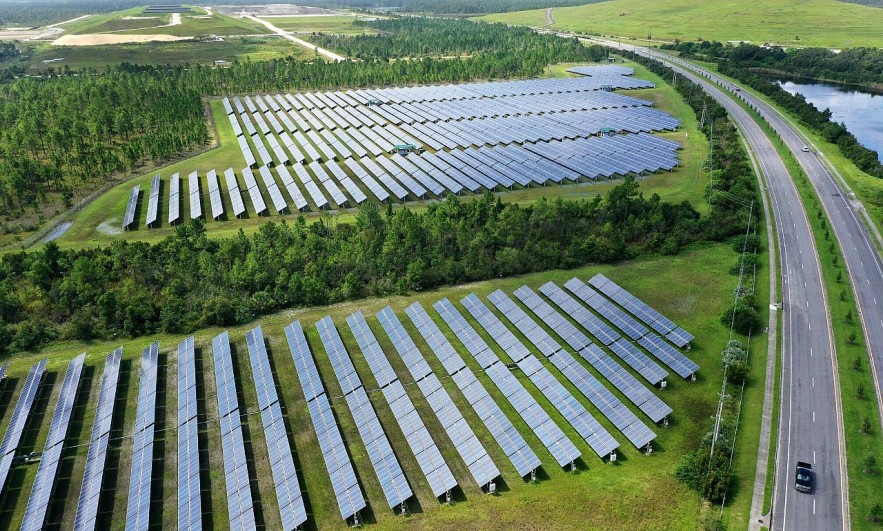 |
| Largest Solar Farms in the U.S |
What Is a Solar Farm?A solar farm, also known as a solar park or photovoltaic power plant, is a large-scale installation of ground-mounted solar panels that capture sunlight and convert it into electricity. Unlike rooftop systems, these panels feed power directly into the grid for regional distribution. There are two main types:
When discussing the largest solar farms in the U.S., we’re referring to massive utility-scale projects that help power hundreds of thousands of homes. |
Top 15+ Biggest Solar Farms in America Today
1. Copper Mountain Solar Facility, Nevada
 |
| Copper Mountain - Largest Solar Farms in America Today |
Located in Boulder City, Nevada, the Copper Mountain Solar Facility is a massive 802 MW flat-panel photovoltaic (PV) power plant spanning over 4,000 acres. Developed and owned by Sempra Generation, construction began in January 2010, and the site now features over 9 million First Solar panels.
The facility boasts an average capacity factor of 27.9%, generating approximately 1,348 GWh of clean electricity annually, or 337 MWh per acre.
Copper Mountain shares its location with other major solar projects, including Techren Solar (300 MW), Boulder Solar (150 MW), and Nevada Solar One (64 MW)—bringing the combined output to over 1 GW. For comparison, the nearby Hoover Dam has a generation capacity of about 2 GW, highlighting the region’s growing importance in solar energy production.
2. Mount Signal Solar, California
Located west of Calexico, California, the Mount Signal Solar Project—also known as the Imperial Valley Solar Project—is a large-scale 794 MW photovoltaic (PV) power plant using flat-panel technology.
Developed in three phases by 8minute Energy Renewables, the facility is expected to reach 800 MW upon full completion, making it one of the largest PV solar farms in the world.
Notably, the project has received support from environmental groups, as it is built on low-productivity farmland, minimizing ecological disruption while promoting clean energy.
3. Solar Star, California
 |
| Solar Star |
Commissioned in June 2015, Solar Star remains one of the largest photovoltaic power plants in the United States. Located near Rosamond in California's Kern and Los Angeles counties, the facility boasts a total capacity of 579 megawatts (MW_AC), with a direct current capacity of 747.3 MW_p.
Spanning approximately 3,200 acres (13 square kilometers), Solar Star comprises around 1.7 million high-efficiency SunPower solar panels mounted on single-axis trackers. These trackers enable the panels to follow the sun's path, enhancing energy capture by up to 25% compared to fixed-tilt systems.
The plant is divided into two sections:
-
Solar Star 1: 314 MW_AC
-
Solar Star 2: 265 MW_AC
Together, they generate approximately 1,664 gigawatt-hours (GWh) of electricity annually, sufficient to power around 255,000 homes.
Owned by BHE Renewables and operated by SunPower, Solar Star continues to play a pivotal role in California's renewable energy landscape.
4. Topaz Solar Farm, California
Construction of the Topaz Solar Farm began in November 2011 and was fully completed by February 2015. Located in San Luis Obispo County, California, the facility boasts a total capacity of 580 megawatts (MW_AC), making it one of the largest photovoltaic solar farms in the United States.
At peak output, Topaz Solar can generate enough clean electricity to power approximately 180,000 homes, contributing significantly to California’s renewable energy supply. According to a report by BHE Renewables, the plant helps offset around 407,000 metric tons of CO₂ emissions annually—equivalent to taking 77,000 cars off the road each year.
The farm's infrastructure features First Solar thin-film modules mounted on ground-level steel supports that elevate the panels about 1.5 meters (5 feet) above the ground. These modules are arranged in large geometric rows, carefully designed around access roads and natural stream beds for environmental integration.
The northern section of the farm—closest to existing transmission lines—was constructed first to accelerate grid connectivity. Topaz Solar Farm covers approximately 9.5 square miles (25 square kilometers).
The project also brought major economic benefits, generating an estimated $417 million in positive impact, including property and sales tax revenues, wages from thousands of direct and indirect jobs, supply chain income, and local business growth during its construction and ongoing operations.
Owned by BHE Renewables, Topaz Solar remains a landmark achievement in America’s transition to large-scale clean energy.
5. Ivanpah Solar, California
The five square mile Ivanpah Solar concentrated solar thermal plant is located in the Mojave Desert. It is situated in California at the foot of Clark Mountain.
Bechtel and BrightSource Energy developed the $2.2 billion facilities. With a $300 million investment, NRG Energy was the project's biggest backer.
The solar farm can produce 392 MW in total. It has set up three centralized solar power towers and 173,500 heliostats, each with two mirrors that concentrate solar energy on boilers.
In order to conduct a preliminary synchronization test, the solar plant's first unit was connected to the electrical grid in September 2013.
On February 13, 2014, the building received its official opening, making it the largest solar thermal power station in the world.
However, this project has also drawn criticism for disturbing the habitats of animals and even "frying" birds that fly too close to the hot towers.
At the Ivanpah Solar Electric Generating System, more than 300,000 mirrors have been installed to capture sunlight for nearly 330 to 350 days annually.
Turbines are spun by the steam produced by heated water towers, and the output is enough to power 140,000 Californian homes with electricity.
6. Agua Caliente Solar Project, Arizona
This solar farm, which is situated in Yuma County, Arizona, is situated on land that was formerly used for farming on the White Wing.
As there is an abundance of sunshine available, this location is ideal for a solar farm. It is capable of producing 290 MW.
At peak loads, the 2,400-acre facility can generate enough electricity for 230,000 homes.
The Agua Caliente farm was the biggest solar farm in the world when it went online. Additionally, in February 2012, the project received the Excellence in Renewable Energy Award's "Project of the Year" designation.
Additionally, the farm will lessen annual carbon dioxide emissions by 5.5 million metric tonnes.
7. Crescent Dunes Solar Energy Project, Nevada
In Nevada's Nye County is where you can find this solar farm.
The US Bureau of Land Management is in charge of the 1,600 acres of public land on which the farm is located. It was created with a 30-year operational life in mind.
The first utility-scale solar power plant in the US with a 110MW capacity that is fully integrated with energy storage technology is this solar farm. Additionally, it is the biggest solar power facility with storage in the entire world. The undertaking cost $1 billion.
Construction on the Crescent Dunes Solar Project began in August 2011 with a moderate pace.
When the deployment of the central receiver solar power tower was finished in February 2012, the project eventually reached a significant construction milestone. The 540-foot tower is the world's tallest solar power tower.
Following the completion of the construction phase in 2015, the project's commissioning phase started in February 2014.
The plant has the capacity to produce nearly 500,000 megawatt hours of emission-free electricity annually, enough to power about 75,000 homes.
The solar energy produced will also reduce carbon dioxide emissions by 290,000 metric tonnes annually.
SolarReserve, the Spanish engineering and construction firm ACS Cobra, and the Spanish banking organization Santander are among the investors in this project.
8. Desert Sunlight Solar Farm, California
The 550 megawatt Desert Sunlight Solar Farm is a photovoltaic power plant. It is located in the Mojave Desert about six miles north of Desert Center, California.
About 8.9 million First Solar cadmium telluride modules are used in the project. The project was completed in two phases, with Phase I having a 300 MW capacity and Phase II having a 250 MW capacity. In 2022, a 230 MW battery storage power plant was added.
9. Copper Mountain Solar Facility, Nevada
In January 2010, work on this solar project got under way. The plant went live in December 2010 and took less than a year to complete. The project's construction cost $141 million.
After the first 8MW block of solar panels were installed in the solar farm in 2010, the facility began generating solar electricity. The installation of 775,000 solar panels marked an important milestone for the project.
The Nevada governor, the mayor of Boulder City, and the president and CEO of Sempra Generation officially dedicated the solar farm in March 2011.
Nearly 14,000 households are supplied with emission-free electricity by Copper Mountain Solar Facility. Sempra Generation, a San Diego-based subsidiary of Sampa Energy, is the company that owns and operates it.
Over the course of the project's life, the local, state, and federal governments will each receive $135 million in new revenue.
Five full-time jobs and nearly 350 construction jobs were also created during the project.
Renewable Energy World recognized the solar farm as the "Solar Project of the Year" in March 2011.
10. California Valley Solar Ranch
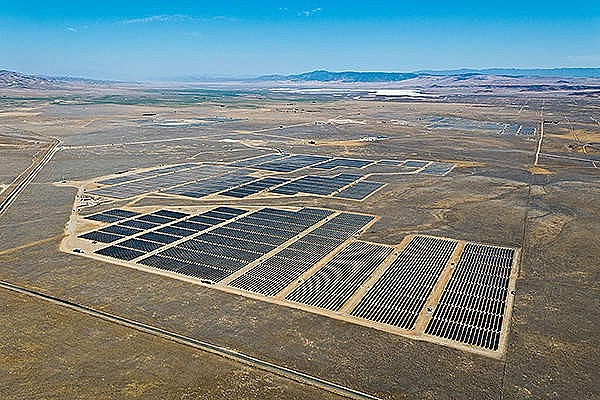 |
| California Valley Solar Ranch |
After the project's construction started in September 2011, full commercial operations began in October 2013. The project is expected to cost close to $1.6 billion overall.
In the Carrizo Plain, the solar farm spans about 4,700 acres of grazing land. 30% of the project site is made up of solar arrays, facility buildings, and a substation. The remaining land is protected and used to help the local species survive.
A defunct gypsum mine was cleaned up and made operational on the farm's site as well.
Due to its flat topography, plentiful solar resources, and closeness to current transmission lines, this particular location was chosen.
The project's electricity output is sufficient to meet the annual electricity needs of almost 100,000 homes.
The CVSR facility has a water recycling plant and uses very little water for routine cleaning. Nearly 336,000 tonnes less dangerous greenhouse gas emissions will be produced annually as a result.
Additionally, the economic development of the area is expected to benefit from this solar ranch to the tune of $315 million. During the construction phase, more than 700 jobs were generated.
11. Antelope Valley Solar Ranch, California
On February 20, 2013, the solar ranch's construction was finished, and the first 100 MW of capacity went online. The project required a total investment of about $1.36 billion.
Nearly 3.8 million solar panels are located at the Antelope Solar Ranch. To withstand the high wind speed, the panels are fastened to metal racks and don't rise higher than eight feet off the ground.
Nearly 75,000 homes could receive electricity from the plant.
The project generated 400 construction jobs and 15 jobs in operations and maintenance during the planning stage.
The project will help California achieve its goal of producing at least 33% of its electricity from renewable sources, which will result in a reduction of 140,000 tonnes of carbon dioxide emissions annually.
12. Mount Signal Solar, California
There were three phases to the project's construction, and two of them were finished in 2018. The farm has a 594 MW total capacity.
More than 3 million solar modules, which rotate on a north-south axis and follow the path of the Sun, are spread out over 801 hectares of nearly unused farmland in the solar farm.
The use of a technology called "DuraTrack HZ" has been made during the project's construction. It is a sturdy tracker that is intended to provide stability and support for applications involving frameless thin-film modules.
The DuraTrack HZ technology speeds up installation while reducing wasteful labor and material use.
This solar farm will be one of the biggest single-axis tracker solar power facilities in the world once it is fully operational.
The farm produces enough electricity to supply 72,000 homes in the San Diego Gas & Electric (SDG&E) service area.
The project will also reduce carbon emissions by almost 356,000 tonnes annually, which is the equivalent of displacing nearly 15 million trees annually.
Over 700 direct jobs were generated by the project during the height of construction.
13. Roadrunner Solar
The largest operational solar project in Texas is called the Roadrunner Solar Plus Storage Project, and it is situated in Upton County. With a total project area of about 2,770 acres, construction started in February 2019. It is anticipated that this project will produce 1.2 TWh annually while preventing the emission of more than 800,000 tons of CO2. The project has a 57 MW battery storage capacity.
14. Permian Energy Center
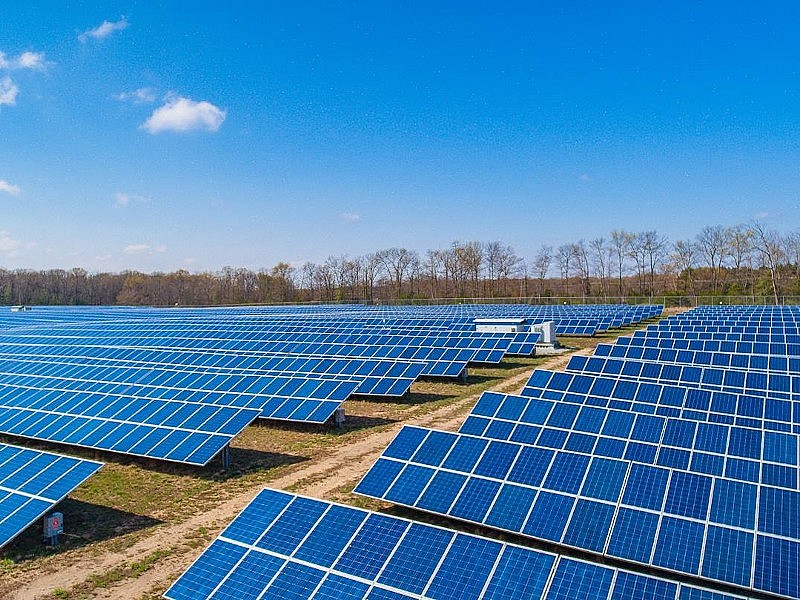 |
| Permian Energy Center |
The 460 MWAC installed capacity Permian Energy Center, a utility-scale solar plus battery storage project owned by rsted, is situated in Andrews County, Texas. It is planned to meet the rising demand for electricity in West Texas and is situated on a 3,600 acre site next to existing oil and gas installations. With its 1.3 million solar panels, the project should be able to supply more than 80,000 American homes with clean energy.
15. Springbok Solar Farm
A 443 MW photovoltaic power plant called the Springbok Solar Farm is located in Kern County, California, in the northwest Mojave Desert. 8minuteenergy Renewables designed and built the facility in three stages. More than 152,000 households could have been served by the renewable energy produced by this project.
16. Mesquite Solar Project
In Arlington, Maricopa County, Arizona, there is a 400 MW photovoltaic power plant called the Mesquite Solar Project. The owner of it is Sempra Generation. More than 2.1 million Suntech Power crystalline silicon solar panels were used in its three phases of construction.
17. Techren Solar Project
Near Boulder City, Nevada, there is a 400 MW solar photovoltaic power plant called the Techren Solar Project. The project is situated in Eldorado Valley alongside a number of other sizable solar power projects. The SECP founded and developed the project initially, and 174 Power Global, the Hanwha Group subsidiary in the United States, continued to develop it. There were two phases to the project, and both units produced a maximum system voltage standard of 1.5kVdc.
Are Solar Farms Good or Bad?
Benefits of Solar Farms
Solar farms offer many advantages:
-
Generate clean, renewable, and reliable energy
-
Produce minimal emissions
-
Can be built almost anywhere globally
-
Provide electricity to remote or underserved areas
Drawbacks of Solar Farms
Despite their benefits, utility-scale solar farms can raise environmental concerns:
-
Require large land areas, potentially disrupting natural landscapes and existing land uses
-
May harm local wildlife and destroy native habitats
-
Construction activities (grading, clearing) can affect air quality, soil, water runoff, and drainage
-
In solar thermal plants, water use for cooling can strain resources, especially in dry regions
-
Dust and particulate pollution may arise during construction
While solar farms are vital to clean energy, careful planning is needed to minimize their environmental impact.
Utility-Scale vs. Community Solar Farms: Key Differences & Investment Guide (2025)Utility-Scale Solar Farms Community Solar Farms Main Difference Solar Farm Investment: Costs & Considerations (2025)Cost to Build a Solar Farm
Land Requirements
Construction Timeline
Maintenance Needs
Expected ROI
|
Conclusion
Solar farms enable large-scale clean energy production, playing a key role in reducing greenhouse gas emissions and creating thousands of green jobs. As global demand for renewables grows, these projects remain vital to sustainable development.
However, solar farms come with challenges. They require extensive land, involve high upfront costs, and demand ongoing maintenance. In some countries like China, outdated infrastructure causes up to 30% energy loss, limiting efficiency.
One solution is building super grids—advanced transmission networks that deliver solar power from rural farms to urban centers more efficiently.
Despite these challenges, the global expansion of solar farms is accelerating. Beyond energy production, they help expand eco-friendly zones worldwide, contributing to a cleaner, more resilient planet.


